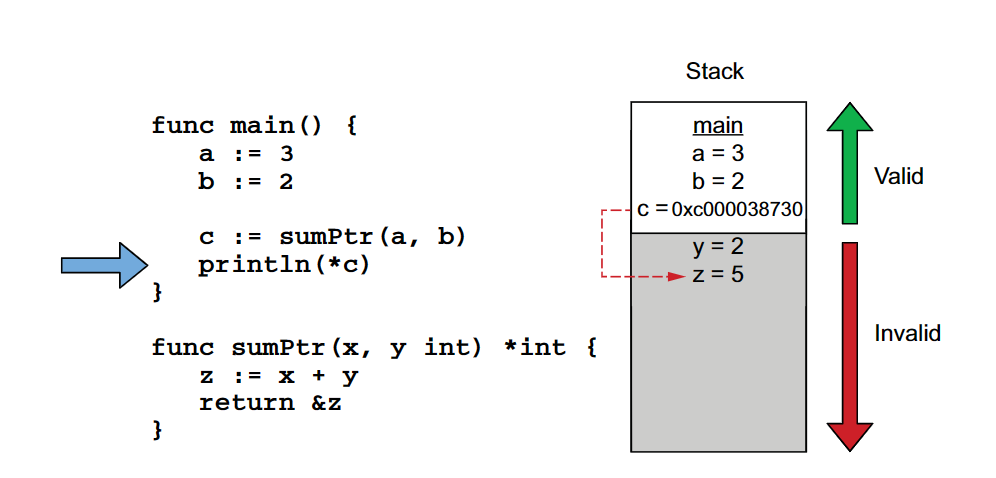golang 12 Optimizations
2023年3月25日
not understanding stack vs heap #


分配在heap的case
-
全局变量
-
发送给channel的指针
type Foo struct{ s string } ch := make(chan *Foo, 1) foo := &Foo{s: "x"} // Foo对象分配在heap ch <- foo -
发送给channel的值所引用的对象
type Foo struct{ s *string } ch := make(chan Foo, 1) s := "x" bar := Foo{s: &s} // s对象分配在heap ch <- bar
go build -gcflags "-m=2" 查看编译的escape(分配到heap)的情况
not knowing how to reduce allocations #
常见方式
- 使用strings.Builder
- 避免 []byte 转为 strings
- 预先设置slice和map的大小
- 优化struct对齐方式
改变API #
type Reader interface {
Read(p []byte) (n int, err error)
}
type Reader interface {
Read(n int) (p []byte, err error)
}
第二种方式设计的API必然会在heap上分配,而第一种方式将决定权放在了调用者一方
编译阶段自动优化 #
type cache struct {
m map[string]int
}
func (c *cache) get(bytes []byte) (v int, contains bool) {
key := string(bytes)
v, contains = c.m[key]
return
}
func (c *cache) get(bytes []byte) (v int, contains bool) {
v, contains = c.m[string(bytes)]
return
}
方式二, compiler不会做[]byte到string的转化
使用sync.Pool #
func write(w io.Writer) {
b := getResponse()
_, _ = w.Write(b)
}
var pool = sync.Pool{
New: func() any {
return make([]byte, 1024)
},
}
func write(w io.Writer) {
buffer := pool.Get().([]byte)
buffer = buffer[:0]
defer pool.Put(buffer)
getResponse(buffer)
_, _ = w.Write(buffer)
}
对比第一种方式, 频繁创建对象时可以使用sync.Pool的方式
When are objects drained from the pool? There’s no specific method to do this: it
relies on the GC. After each GC, objects from the pool are destroyed
not relaying on inling #
1.9版本之后支持 mid-stack inline 当一个mid函数体中包含fast-path, 和slow-path时,由于mid整体的复杂度高不会inline, 把slow-path封装到独立函数时,mid函数就可以被compiler执行inline优化